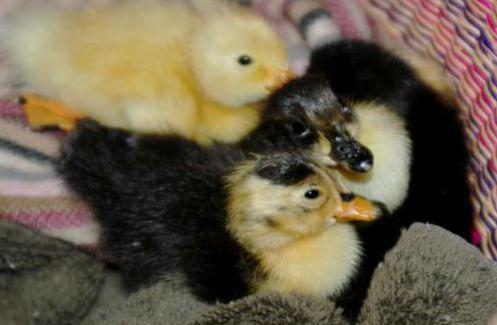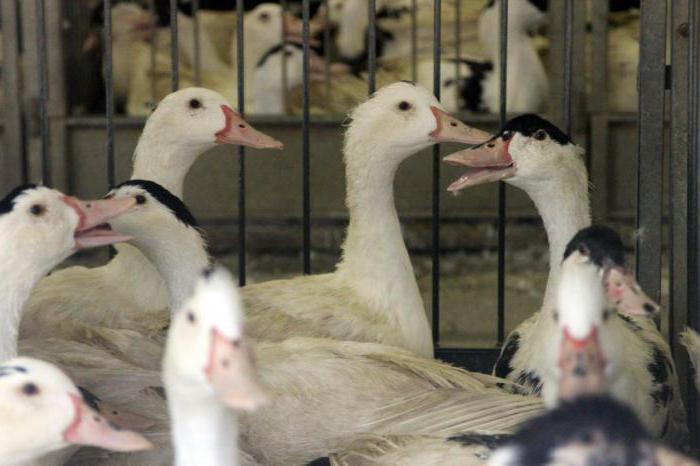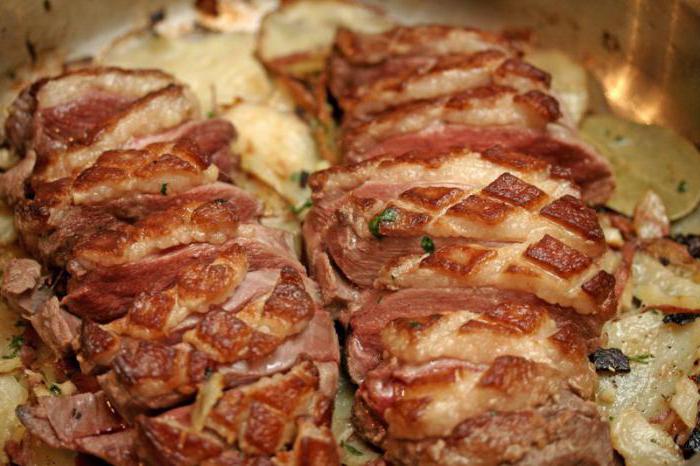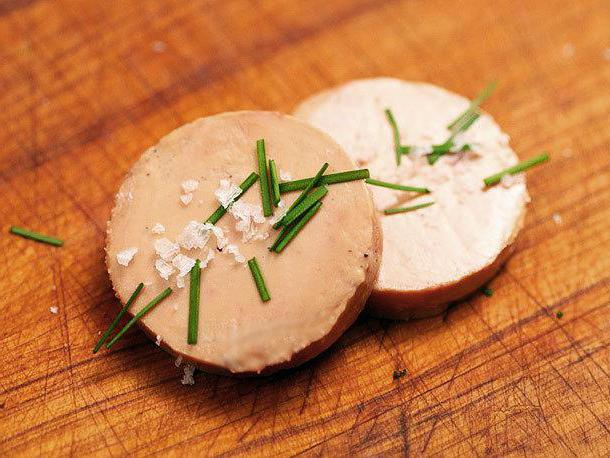Today, in home gardens, many breed domestic animals for their own needs or for sale. This process is not so complicated, especially if there is sufficient food supply. It is easiest to grow a bird, because it is easier to feed it, and there is no need for specially equipped rooms for it, and it is not necessary to leave it for the winter. One of the most beneficial poultry breeding for home breeding is mulard (duck).
Breed description
Mulard is a not so long ago artificially bred hybrid obtained by crossing in the classic version of musky and domestic Peking white duck, intended exclusively for meat, because it does not produce offspring. This breed was bred by French breeders who were able, while retaining the advantages of the original breeds, to practically get rid of their shortcomings.
It is easy to recognize these ducks by the black speck on their head, which is the only mark on a completely white body.
If a musky breed drake is crossed with a Rouen duck, white aloe or Orlington duck, an interspecific hybrid of moulards is also obtained, only their color can change slightly, a spot remains on the head.
Mulard - ducks that are suitable for both domestic and industrial cultivation. Outwardly, they look tightly knocked down and are distinguished by good health.
Breed characteristics
Moulard domestic ducks are hardy, can adapt to any conditions, are resistant to diseases, give a high survival rate, are productive, their meat is less fat and more delicious than ducks of other breeds. They easily tolerate temperature extremes and cooling and are unpretentious in food.
This bird is distinguished by an enviable calm and cleanliness. And compared to other breeds, it is very quiet. Ducks rarely quack and do not rush about in the yard, especially if there is a pond nearby.
The difference in weight of drakes and ducks of this breed is about half a kilogram. In two months, with proper care and nutrition, the mulard reaches a weight of 3.5 kg, and after another month - 6 kg. For summer residents who live outside the city for no more than six months and can let out a bird picking grass, this breed is especially beneficial at relatively low cost of feeding.
Mullard duck breeding
Ducks of this breed carry eggs, but they are unfertilized. Therefore, for breeding mullards, you can buy eggs in an incubator, but even at home you need to organize an incubator with strict observance of temperature and light conditions. The mulard ducks need this.
Home breeding is also possible from chicks or an already grown bird that has characteristic external features of the breed. This path is more reliable, but the price of ducklings is quite high. You can reduce the cost of purchase by purchasing young animals in bulk if you need a large number of birds.
Amateurs-breeders can breed a hybrid on their own. This path is longer, laborious, but also more exciting. For starters, you need a musky breed drake and two or three Peking ducks, or vice versa, how it goes. This is not so important, although in the second case the ducks will turn out not so meaty. Another thing is important: they need to be kept separate from the rest of the poultry, because it is difficult to make a drake fertilize a female of another breed and you should not leave him a choice.
Ducks hatch eggs, as usual. You can use an incubator, only in it the productivity is much lower - about 60%. And at least 80%, or even 100%, is removed under the hen.Ducklings are growing actively, after some one and a half to two months they already surpass their parents by weight.
Features of growing ducklings
If mulard ducklings are purchased for growing, immediately after they are delivered from the seller of the kids, you need to drink a light potassium permanganate solution from the pipette.
In the first five days of life, the chicks should be kept in a room with a temperature slightly below 30 ° C, next to a reliable heat source and round-the-clock lighting.
In a week, the kids are not afraid of 18 ° C. And after a few days they are provided with lighting no more than 16 hours a day.
Ducklings should be placed on a thick and soft bed of hay or straw. Sawdust cannot be used for this purpose: their chicks peck and can die.
You can let the kids out for a walk already in the second week of life, if the weather is warm and sunny.
Feeding Ducklings
Tiny ducklings have to be taught to eat. Today, pharmacies offer special kits for feeding chicks at home. But it is, firstly, expensive, and secondly, quite laborious. Therefore, for the kids, they make porridge from crushed rice or millet (small cereals) and mix it with a mashed hard-boiled egg. This mixture, warm enough, is sprinkled directly on the ducklings so that they grab the moving food, or on a dark surface on which light porridge is clearly visible.
By the third day, ducklings are already starting to eat on their own. After that, finely chopped nettle or other herbs are introduced into the diet. At ten days old, the chicks gladly eat boiled and mashed potatoes.
All the first month the ducklings are given low-fat cottage cheese and milk, they are added to cereals.
If there is a pond or a river nearby, they catch duckweed in the net and give the chicks from two weeks of age. Ducklings can be released and swimming, but only when the pond is close enough.
Moolards are ducks and naturally love water and drink a lot of it. It is necessary to ensure that there is water in the drinker. Up to a month, ducklings are fed three times a day, then two.
Feeding Adult Muleards
Mulard duck at home should receive not only food, but also mineral supplements.
They feed adult mullards, like ducks of other breeds, with compound feed, wheat and corn.
As mineral additives, eggshell, chalk, limestone and shell are used, which are poured into a separate feeding trough. This feeder should never be left empty.
Fine gravel is needed for the normal digestive process in birds.
Ducks not only drink water, but also rinse their beaks and clogged nostrils with food. Drinkers should be deep, but not too wide.
Adult birds should receive baker's yeast up to 1 g per day for normal digestion, wheat bran and meal, boiled meat waste and potatoes, meat and bone meal.
Mulard duck content
Mulard - ducks, the content of which is no different from the conditions for other breeds of poultry. They spend the night indoors to protect them from rain and cold, the area of which is calculated on the basis of 1 sq. Km. m for 3 individuals. For walking you need a fenced yard, in which at least 1 square meter per bird. m square.
It costs no more than three months to keep a bird. After 60 days, she can be slaughtered, her meat at this time is very tender. Later, the duck begins to molt and plucks heavily. It is believed that it is best to score a mulard in two and three months. In the interval occurs its sexual maturation.
Mullard productivity
Ducks of this breed produce more than 3 kg per meat poultry of very good quality. For this, females are raised, which in adulthood reach a weight of about 6 kg. Males are grown mainly because of the liver, which in the drake reaches more than half a kilogram of weight.

Meat is meat, but, which is especially important in summer life, ducks begin to lay eggs at about three months of age and can bring more than 250 pieces per season.
Advantages and disadvantages of mullards
Endurance, vitality and peace of mind are not all the advantages that a duck mulard is distinguished by. Farmer reviews begin with the profitability of breeding this breed from an economic point of view. Moolards give a gain in live weight of about one and a half kilograms by ten weeks of age. Compared with ducks of other breeds and geese, they fatten faster, while the consumption of corn, feed, quite expensive, is much less.
Moolards are grown for meat, whose special delicate taste is an undoubted advantage. The liver of these ducks is not much different from the goose in size and fat content. This is also a plus, which is characterized only by duck muleards.
Breeding at home for their own use does not require the conservation of breed characteristics in several generations of the bird.
But for farmers and breeders, the one-season moulard is a drawback. It is much more profitable to purchase a bird, which can regularly bring offspring that retains the characteristics of the breed.
Cooking Mulard Meat
The recipe for mularda duck with apples is very simple, few ingredients are used, because the meat is tender, devoid of a specific duck smell, does not require soaking in a marinade and a lot of spices. Purely washed carcass is rubbed with salt and pepper, greased liberally with sour cream to soften the skin and get a golden crust during baking, pickled for several hours, then stuffed with sour apples, cut into four parts and without a core.
Then, in the sleeve, the bird is baked for 2-2.5 hours, depending on its size, until the same golden crust is obtained. The meat is remarkably baked and easy to cut.
A rather complicated recipe for a mulard breast with lemon chutney with an abundance of ingredients and spices is impossible with fatty duck meat of another breed, which is melted into fat when frying.
It is believed that for the preparation of the famous foie gras (paste from a fatty liver), not only goose, but also a fatty nutritious soft liver, which is distinguished by duck mulard, is suitable. Cooking this dish is a whole art. And the fat that is secreted when baking duck liver plays an important role both in the preparation of the paste and in its storage.
Mulard - ducks with a lot of advantages, the disadvantages of which are completely unimportant with home breeding. Dishes prepared from their meat and liver are striking in their delicate taste and nutritious. Their eggs can provide any family in abundance. Therefore, they are so beneficial for growing in personal plots, especially if the pond is close.








